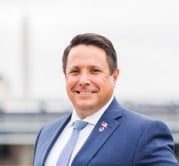Enhancing credit union communication and support for military and veteran members

Over the last few weeks, I have seen many LinkedIn posts where young family members, fresh out of high school, are headed for basic military training in the United States Armed Forces. It is always a bittersweet moment for parents and grandparents; particularly for those who have also served in the military. As a veteran myself, I think about what these young Americans will experience within their next few weeks just as I did years ago.
The first weeks of basic military training are rough and very stressful. There are plenty of drill sergeants and MTIs (military training instructors) who constantly “motivate” you to do things outside your comfort zone. Not to mention, drill sergeants have a “gentle” way of “correcting” you when you do something wrong—which, at basic military training, happens all the time. Other unique experiences include entire meals being consumed in under 5 minutes, having to always keep your quarters and uniforms inspection-ready, and the physical and mental challenges that increase with each passing day.
However, the whole experience soon becomes a moment of pride and accomplishment when these same individuals graduate and continue their military journey toward tech school and their first duty station. Shortly after they arrive at their first assigned post or base, they are required to begin “upgrade” training within their specialty (e.g., apprentice, journeyman, and craftsman) along with on-the-job training, both of which must be constantly documented and certified.
Then, there is combat training (e.g., weapons, nuclear/bio/chemical defense, law of armed conflict, etc.) and other skill certifications. All of this, mind you, occurs while these individuals are still striving to sustain a “normal” existence as a young adult. It’s clear to see these young Americans have little time to think about financial planning, set aside money for retirement, or consider what life outside the military might look like following their time in the service.
Over the last 60 years, this is where the Defense Credit Union Council and its member credit unions have made a difference. Helping military members and their families is a core part of our mission. DCUC’s founders saw there was a need for an association that understood the way of military life and the different level of service and dedication credit unions bring to their military and veteran communities. We expect that need to remain as long as the United States continues recruiting brave young Americans who selflessly serve to defend and uphold our freedoms.
That said, serving in uniform is only one part of the military lifecycle. While there are currently over 2 million servicemembers, there are also over 18 million veterans in our nation. This is where DCUC continues to lead and educate others on how to “speak military,” especially given our connections with the U.S. Department of Veteran Affairs and several Veteran Service Organizations.
DCUC and its member credit unions have already taken on a large role in helping our Nation’s veterans as they make the transition to civilian life. Helping our veterans during this change in lifestyle comes naturally for each of our member credit unions as many carry years of history and traditions in serving those who have served our country. We also expect this need to remain as we, the credit union industry as a whole, and our military continues to progress.
Knowing there is an ongoing need within the credit union industry for financial services and guidance that “speaks military,” DCUC has created free educational resources and publications, and continues to host multiple conferences and events exemplifying the credit union philosophy of “people helping people.” I encourage any credit union looking for ways to connect or grow their relations within their local military and veteran communities to download a free copy of our recent webinar, “Speaking Military: Enhancing Credit Union Communication and Support for Military and Veteran Members,” hosted by CUInsight. Through this resource, credit unions are provided insightful discussions from industry leaders who shared helpful advice, strategies, and tools for ways to truly make a difference in the lives of our military and veteran communities.
Another educational resource we offer is the recently published Spanish Version of our popular Guide to the Military’s Blended Retirement System. In addition, DCUC helped establish a new Veterans Saves program and assisted many credit unions with their onboarding in the Veterans Benefits Banking Program (VBBP). The VBBP is a program designed to help veterans gain access a free, secured checking account at participating institutions. Participation is free and open to any credit union who has a free checking account product and is committed to serving veterans. In a few short weeks, we will be releasing an updated version of our informative Veterans Guide which is vetted by the U.S. Department of Veteran Affairs! To learn more on how to better serve the military and veterans in your field of membership, visit us online at www.DCUC.org. We all have a great opportunity to not only show our Nation’s military and veterans the credit union difference, but also our appreciation.

